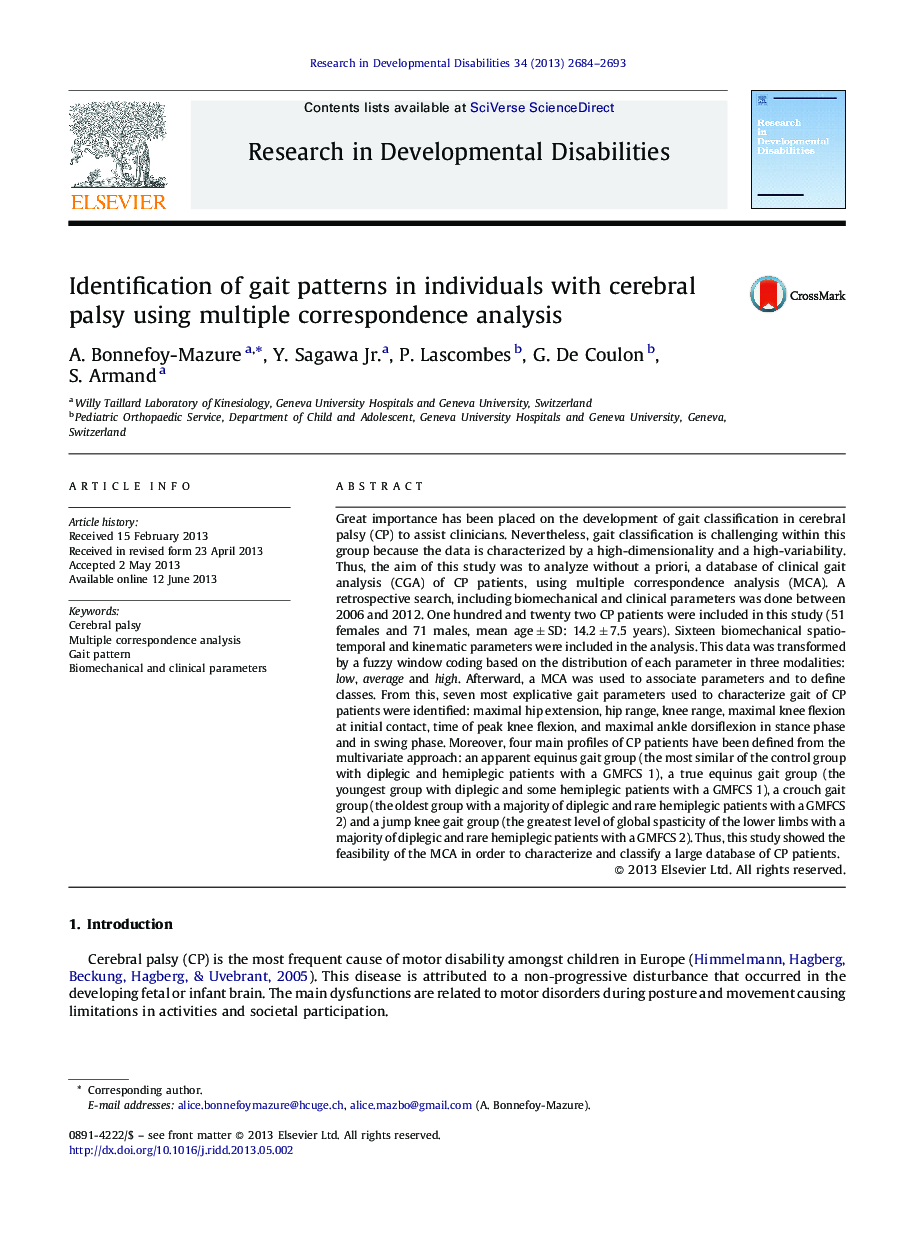| کد مقاله | کد نشریه | سال انتشار | مقاله انگلیسی | نسخه تمام متن |
|---|---|---|---|---|
| 10317748 | 621928 | 2013 | 10 صفحه PDF | دانلود رایگان |
عنوان انگلیسی مقاله ISI
Identification of gait patterns in individuals with cerebral palsy using multiple correspondence analysis
ترجمه فارسی عنوان
شناسایی الگوهای راه رفتن در افراد مبتلا به فلج مغزی با استفاده از تجزیه و تحلیل مکاتبات متعدد
دانلود مقاله + سفارش ترجمه
دانلود مقاله ISI انگلیسی
رایگان برای ایرانیان
کلمات کلیدی
فلج مغزی، تجزیه و تحلیل مکاتبات متعدد، الگوی ظهور، پارامترهای بیومکانیک و بالینی،
موضوعات مرتبط
علوم زیستی و بیوفناوری
علم عصب شناسی
علوم اعصاب رفتاری
چکیده انگلیسی
Great importance has been placed on the development of gait classification in cerebral palsy (CP) to assist clinicians. Nevertheless, gait classification is challenging within this group because the data is characterized by a high-dimensionality and a high-variability. Thus, the aim of this study was to analyze without a priori, a database of clinical gait analysis (CGA) of CP patients, using multiple correspondence analysis (MCA). A retrospective search, including biomechanical and clinical parameters was done between 2006 and 2012. One hundred and twenty two CP patients were included in this study (51 females and 71 males, mean age ± SD: 14.2 ± 7.5 years). Sixteen biomechanical spatio-temporal and kinematic parameters were included in the analysis. This data was transformed by a fuzzy window coding based on the distribution of each parameter in three modalities: low, average and high. Afterward, a MCA was used to associate parameters and to define classes. From this, seven most explicative gait parameters used to characterize gait of CP patients were identified: maximal hip extension, hip range, knee range, maximal knee flexion at initial contact, time of peak knee flexion, and maximal ankle dorsiflexion in stance phase and in swing phase. Moreover, four main profiles of CP patients have been defined from the multivariate approach: an apparent equinus gait group (the most similar of the control group with diplegic and hemiplegic patients with a GMFCS 1), a true equinus gait group (the youngest group with diplegic and some hemiplegic patients with a GMFCS 1), a crouch gait group (the oldest group with a majority of diplegic and rare hemiplegic patients with a GMFCS 2) and a jump knee gait group (the greatest level of global spasticity of the lower limbs with a majority of diplegic and rare hemiplegic patients with a GMFCS 2). Thus, this study showed the feasibility of the MCA in order to characterize and classify a large database of CP patients.
ناشر
Database: Elsevier - ScienceDirect (ساینس دایرکت)
Journal: Research in Developmental Disabilities - Volume 34, Issue 9, September 2013, Pages 2684-2693
Journal: Research in Developmental Disabilities - Volume 34, Issue 9, September 2013, Pages 2684-2693
نویسندگان
A. Bonnefoy-Mazure, Y. Jr., P. Lascombes, G. De Coulon, S. Armand,
